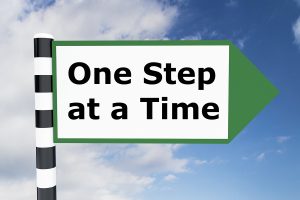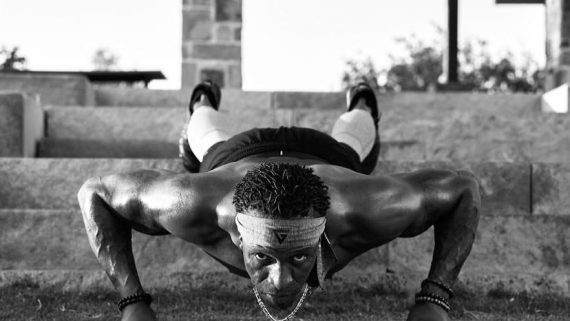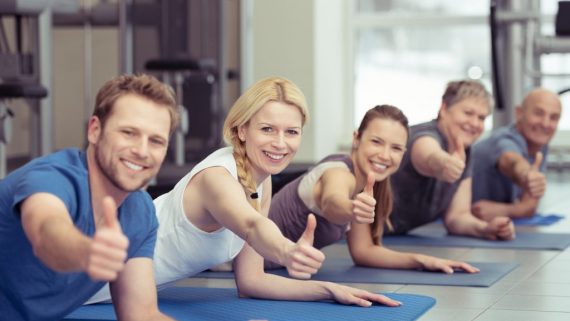Head Stand: One Step at at Time
Learning How to do a Head Stand.
By: Mike Mirabal, Yoga Teacher
One afternoon, about eight years ago, still fresh-out-of-teacher-training and with a mind like a sponge – ready to soak it all in, a friend invited me to a private workshop with a renown teacher who was visiting Dallas. He called him “The Amazing Kumar.”
I was intrigued by the idea of a private workshop with a teacher with whom I had not studied, and a studio I had not yet attended, so I eagerly accepted the invitation.
Some things about the studio stood out to me. Unlike others I had visited, this studio had both wood and carpet on the floor, there weren’t large mirrors lining all the walls, and there was not any obnoxious music playing.
The quiet, peaceful atmosphere seemed foreign in comparison to the chatty, bustling studio atmospheres I was familiar with.
Sitting rigidly on my eco-friendly mat in my sweat-wicking tank top and designer stretchy pants, like the handful of other teachers in the room I waited for some new yoga adventure to unfold.
I was accustomed to the general power vinyasa flow style, but nothing I learned in any “hatha” or “vinyasa flow” class had prepared me for what came next.
Jeff, the studio owner, stepped out of his office and placed a plain wooden chair in front of the group of us. Shortly after, Kumar casually emerged, walked across the room, and sat before us.
He was an elderly Indian man with a charismatic, yet unassuming appearance, totally normal looking – Not what I expected.
Perhaps he could sense my unsettled ambition, because he took a moment to size up the lot of us, and to my surprise, he pointed right at me.
“You!” he exclaimed. “Come up here and do a headstand.”
At that point, I was wondering what in the world is going on, but after a little hesitation, I stood up, walked to the front of the group, put my head on the floor, and simply piked right up to a “tripod headstand.”
I had been doing a lot of yoga practice, in classes, workshops, and at home, so I assumed I had a good grasp on how to do things. Apparently, I was mistaken.
“NO!” he yelled, to my surprise. “Get down!”
I came down from headstand, and I looked up at him, bewildered.
He glanced around at everyone and asked, “What did he do wrong?”
Cue the anxiety.

Cue several teachers with more classroom experience than I, all dissecting my posture and critiquing my alignment, as if searching for the right answer.
To each, Kumar responded, “No, no, no, nope…” He shook his head disapprovingly.
It reminded me of the scene from the beginning of the movie Willow, when the High Aldwin asks “Which finger holds the power to rule the world?” I knew there was something more to it, but couldn’t quite say what it was.
Then he told me, “Do it again.”
And as soon as I started to pike up like before, he hollered “No! Get down.”
As I sat there, confused and embarrassed, Kumar proceeded to tell me HOW to do a headstand.
“Sit on your heels. Put your hands down next to your knees. Put your head on the floor. Lift your hips. Right knee on your right elbow. Left knee on your left elbow. Tuck both knees in…” and so on.
He talked me step-by-step through the entrance, holding, and exit of the headstand, and when he was done, he said matter-of-factly, “That is how you do the headstand.”
A little dumbfounded, we just looked at him as if issuing a collective sigh of “Huh… Well, Ok.”
I had learned it this way before, so I thought there was nothing new about performing the movements in the order he instructed, but there was something about his instruction which struck me as different, intriguing, and important.
What he had shown me was the importance of each step. Somehow without him actually saying so, the concept just clicked.
He called it eka jaggaye – “one step at a time.”
This experience became a catalyst, which sparked much contemplation, and from then on, began to influence and inform my personal practice and the way I teach classes.
I realized that I had been rushing. I realized I was somehow unaware of all of the in-between stuff, as if it didn’t quite count as much as the final result or peak alignment of a posture.
Kumar’s simple instruction helped shape my yoga practice like no other teacher had done before – A sort of trial by fire that shook the sleep out of my eyes.
The one-step-at-a-time methodology began to pervade my practice – like I could suddenly read between the lines.
Gradually, it started to feel okay for me to relish in any single step, even for a considerable duration of time, rather than striving hastily for the end result.
I was finding santosha and aparigraha through my asanas. My movements became slower, steadier, and more intentional. The unnamed transitions between postures came alive with meaning and usefulness, and my breath settled naturally into a rhythm, which connected the dots and set the pace of it all.
I gained other valuable insights from the few workshops I attended with Kumar, but this was the initial “a-hah!” moment which truly opened my eyes to the ever-present yoga magic – each breath, each heartbeat, each movement, all interconnected and potentially fascinating.









